Carica papaya: Survivalist plant
Papaya comes from the grocery store, unless you live where it seldom freezes. Then it is another wild edible, naturalized in most warm areas. And there’s more to it than just the fruit. But first, what is it?
Surprisingly there is a debate whether the papaya (Carica papaya KAIR-rick-uh puh-PYE-yuh)) is a tree or an herb. It seems to meet the expectations of both. They fudge the difference and call it a giant herbaceous plant, one that can grow 10 feet a year and to 30-feet high.
My first introduction to papaya was a retired postman in Rockledge, Fl., who terraced his very small house lot to grow hundreds of papayas of all kinds and shapes. He was a home-spun naturalist who dug up mastodon teeth on the weekends and grew the largest papayas I’ve ever seen.
Papayas can also surprise you. I grew one for about eight years but had a constant problem with papaya flies ruining the fruit. Yet papayas growing wild on the east coast at Turtle Mound survive elevation, frost, freezes and fruit flies. Like the banana the papaya is more than its fruit, which can be cooked when green or eaten raw when green or ripe. The young leaves and flowers are edible boiled, and the inner pith of the main stalk is edible raw. The roots are edible if boiled a long time. And if you run out of soapy washcloths the older leaves have saponins and can be used as a wash cloth. Now, let’s go where few have gone.
First, the papaya is a berry. Yeph a berry. And it is in the family as maypops, Passifloras, which makes sense as the leaf and fruit structure are similar. Most folks toss the black seeds away but they are edible, too. They are peppery and can be used like pepper. They also stay viable for three years. Papayas are native to Central American and moved around the world with Spanish exploration in the 1500’s. Surprisingly the papaya did not get to Florida until the 1900’s from the Bahamas. Not bad for a runt. You see, papaya was domesticated in Central America from weedy and almost inedible original plant. It has experienced significant changes in fruit size, growth habit, and flesh color under human cultivation. It was first mentioned in 1526 by Oviedo.
Papayas pack a nutritional wallop: Per 100 gram edible portion papayas are water 88%, calories 43, protein 0.6%, fat 0.1%, carbs 10%, crude Fiber 0.1% and provides of the of US RDA* 48% Vitamin A; 3.6% Thiamin, B1; 8.1% Riboflavin, B2; 2.2% Niacin; 80% Vitamin C; 2.4% Calcium; 1.6% Phosphorus; 3% iron; 5% Potassium.
The only real confusing thing about papayas is their sex and reproduction. They are male, female and bisexual. The females and hermaphrodites make fruit but you need one male plant for every 10 of the others. On the male plant the flowers are on stems. On the female the flowers are directly on the main trunk (see above.)
Carica comes from the Greek word karike, which was a kind of fig. The papaya was called that because of its fig-like leaves. Papaya is what the Caribs called the papaya. Some times it is wrongly called a pawpaw or papaw.
Green Deane’s “Itemized” Plant Profile
IDENTIFICATION: A large, single-stemmed herbaceous plant, to 30 feet, leaves are very large, up to 2 ½ feet wide, palmate (hand shaped) stems one to three feet. Trunk to a foot thick, with prominent leaf scars. Flowers waxy, ivory white on trunk Fruit larger to 20 pounds, oval to round, central seed cavity with black seeds. Fruit born on main stem, flesh is yellow-orange to salmon at maturity. Plants begin bearing in 6-12 months.
TIME OF YEAR: In tropical climes nearly continuously, in more temperate areas late summer through the winter if no frost or freeze.
ENVIRONMENT: An opportunist, it likes good soil, water and sun. Trash heaps, middens, old homesteads, margins.
METHOD OF PREPARATION: Ripe fruit raw, unripe fruit cooked; young leaves and flowers boiled, roots boiled a long time, inner pith of main trunk raw.

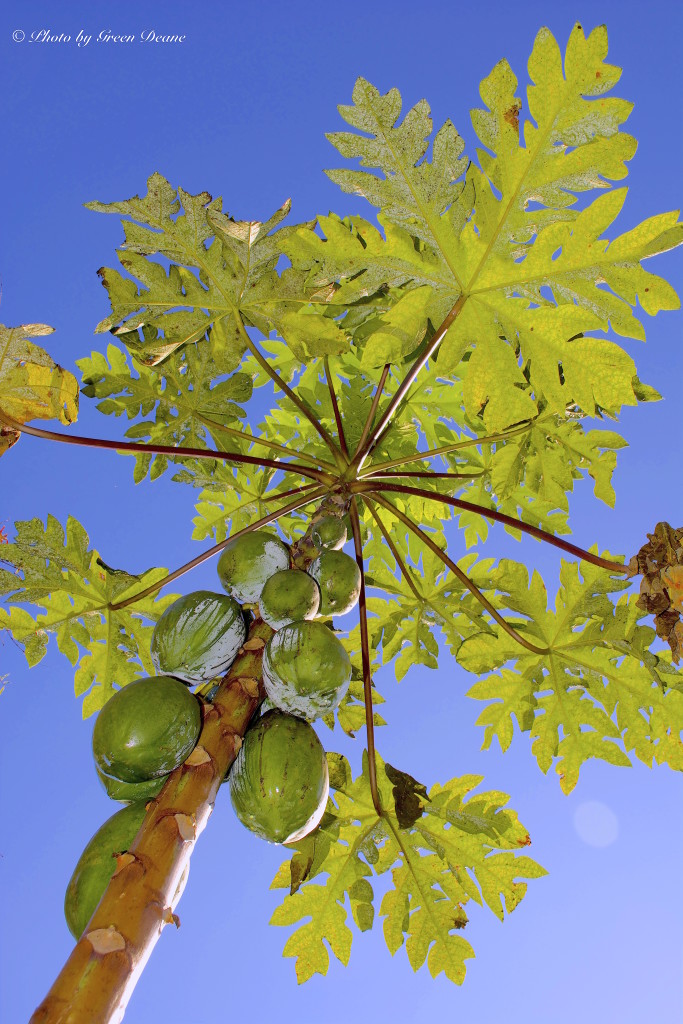
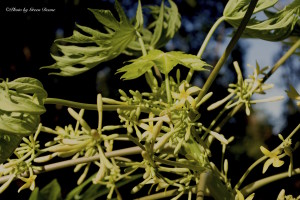
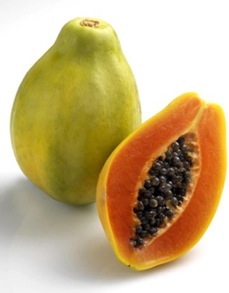
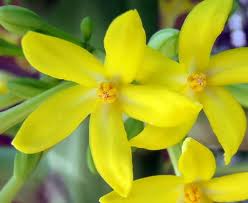
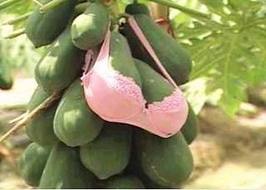

live in the Peruvian Amazon and would like to know all of the edible plants here. Of course I know the obvious ones but I am sure there are many more I don´t know. Loved the information on the papya tree. We eat the fruit but had no idea the leaves where edible too. I hunger for more greens in my diet.
When you say the unripe fruit is cooked, how would you recommend cooking it?
You can use it in stew/soups with your choice of meat (I prefer chicken), flavor it with ground pepper and fish suace for umami. You can also pickle green papaya or use it in salad (Thai salad) with fish paste.
Sam,
There’s no limit to the “green” papaya recipes you can find online. You can essentially use it as a substitute for potatoes in most recipes. There are many ethnic dishes that use it, but cooking can be as simple as dicing and stir frying in a small amount of oil and salt. One of my favorite American style recipes is papaya hashbrowns. Shredded, pan fried papayas also work great in an omelette or quiche.
I would say it’s a substitute for squash, as the texture and taste of green papaya is very similar to that of zucchini/summer squash.
Was wondering if anyone ate male papaya fruit, i see photos online but cannot find the flavor description.
Green papayas taste great when cooked with aromatics. Peel and seed the papaya and cut into one inch cubes or diagonals. Fry some garlic, onion and ginger strips, add chicken broth, season with sea salt, then add the cut-up green papaya and cook for 10 minutes. Depending on how much chicken broth or stock you add, this makes a great vegetable soup or stew. You can also add spinach, amaranth, nasturtium, pepper or moringga leaves to this dish.
We used to have a papaya tree in our yard in Malaysia. My mum used the leaves (older) to wrap it around pig intestine and boil it softly in water. It made the flesh more tender. We have stopped eating pork for many years now but my point is you could use the leaves to tenderize your meat.
Kim,
I will please want to know why you emphasized, “We have stopped eating pork for many years now” the reply might be of mutual benefit. Thanks
i would like to know if wild papaya is different from the regular papaya
As far as I know, no.
kayedeanC
the way i see it…
it depends…
some people call “Wild Papaya” the regular papaya which is wild, but, not a named cultivar.
those are absolutely good to eat.
some people refer to “wild papaya” as Mountian papaya
which is really Vasconcellea pubescens (a relative)
these are also good to eat, yet, not as tasty.
there are other relatives to papaya which have been reffered to as “wild papaya” at times, most are in Vasconcellea
some are edible, and some not…
the only ones i know that LOOK like a real papaya fruit
are ral papaya, just not a named cariety.
so, if they look like papaya, it is probably a papaya and good to eat.
more…
http://www.backyardnature.net/yucatan/wild-pap.htm
The wild papayas have been placed in genera Vasconcellea and are referred to as Highland or mountain papayas
http://www.researchgate.net/publication/236107735_Genetic_relationship_among_papaya_%28Carica_papaya%29_and_wild_papaya_%28Vasconcellea_species%29_using_RAPD_and_ISSR_markers*
the only ones i know that LOOK like a real papaya fruit
are real papaya, just not a named variety.
A berry? Wow! I never would have guessed. I loved eating papaya on my travels through the tropics but unfortunately it’s not available in my current location.
I just created “apple sauce’ out of green papaya. I Peeled and cut up three big green papayas, added a couple peeled apples for apple flavoring and steamed for half hour until the papaya was soft. Flavored it with craisins, cinnamon and six packets of stevia… and a half cup of rum. Then ran through the food processor, adding about half a cup of coffee creamer for richness (Creme brulee flavored).
Served it in martini glasses with whipped cream and a cherry. Delicious!
Btw, peel because the skin is bitter.
Are papaya fruit fly larvae edible?
I do not know of any reason why not.
Yes they are edible and quite fatty.In mexico I watched an Oxaca street vendor fry them with cane sugar cinnamon palmoil and for a savory twist chicken stock powder hot chilli powder and splash of lime ,lemon or both!She also fried grasshoppers this way and ant larva( i stopped at that)!!
i LOVE papaya.
very tasty, and very healthy.
i have been growing them for years now.
They dont like cold weather, and especially do not like cold-wet roots.
that said, i grow them near New Orleans.
i plant them on a mound or high area that drains well
(good drainage is essential)
next to my house, which also cuts down on wind damage.
use a lot of mulch around the roots
mine survived 28F degrees last month.
they lost some leaves, but, they do that in winter, they usually come back to life in spring.
i have even chopped one down that was 18ft tall
the 2ft stump came to life in spring, and i had fruit by fall.
since they are really an herb, they grow very fast
(with lots of sun)
and you can grow them from seed to fruit in under a year.
try to plant the seed in ground where you want it.
they are finicky when it comes to transplanting them.
if you do transplant, water it an hour before, and try to move the entire rootball. they dont like the roots to be disturbed.
how do you keep them low enough to reach the ripe fruit?
how do you control the fly?
we use a long and thin bamboo stick to get the fruits
Dried papaya seeds can be used or ground like peppercorns and have a peppery, spicy taste
what is the truth? is it papaya herb or tree
Hi from Largo, Florida.
Hey I really feel as though I have happened upon wild papaya on our Pinellas County bike trail. They seem young, standing at least 2 feet tall but I am scared to dig some up because I fear damaging the roots. More so there are no male/female indications yet or I’m just not experienced enough to understand the difference between them nor how to uproot them.
Help.